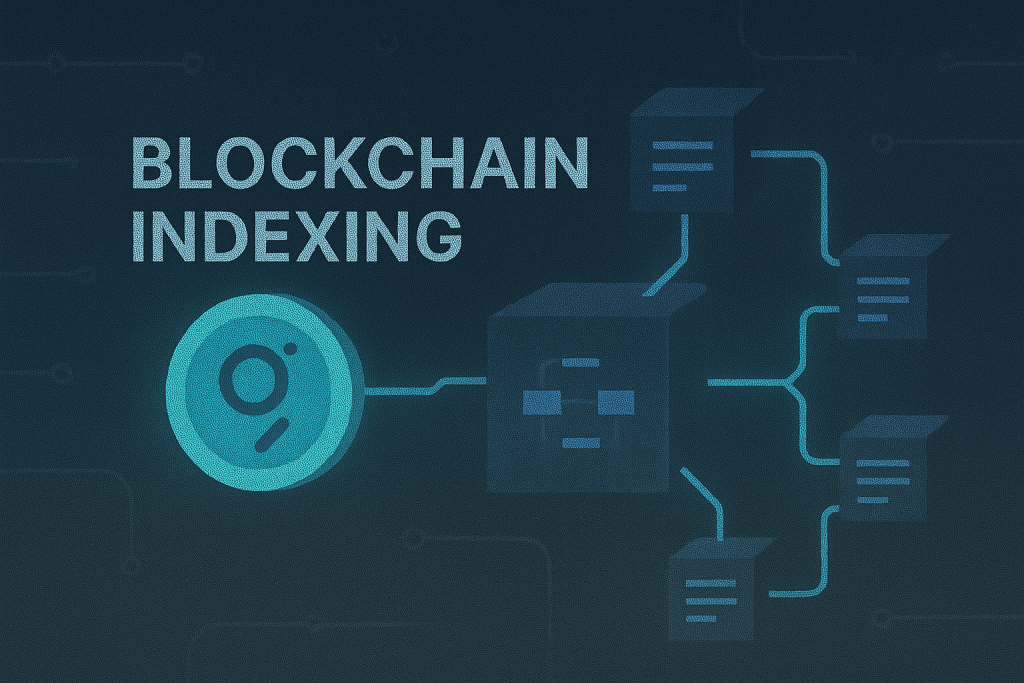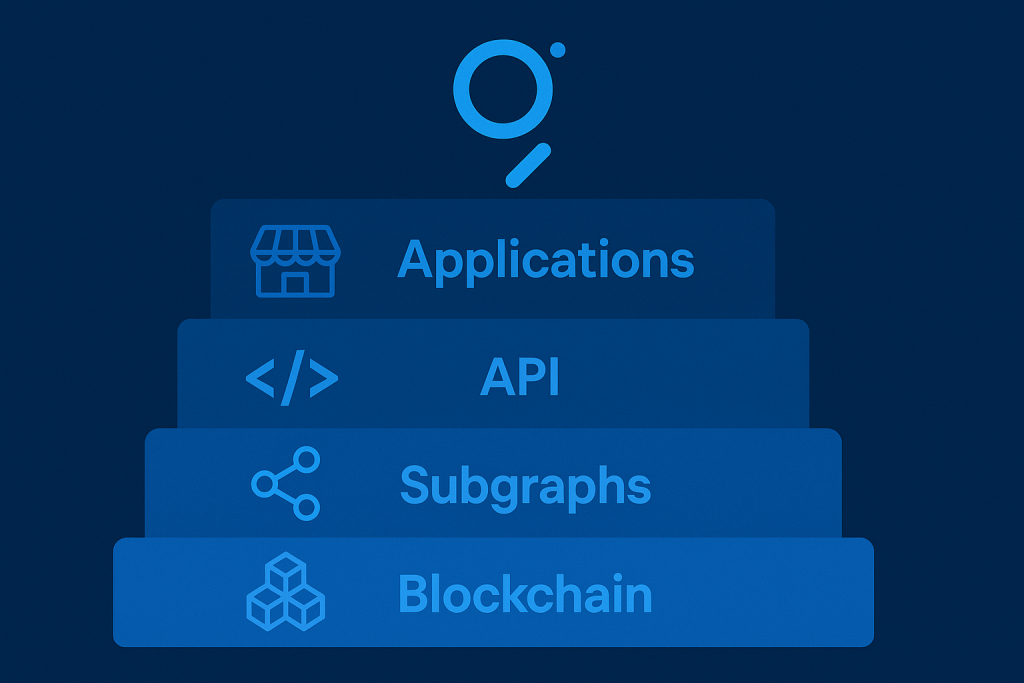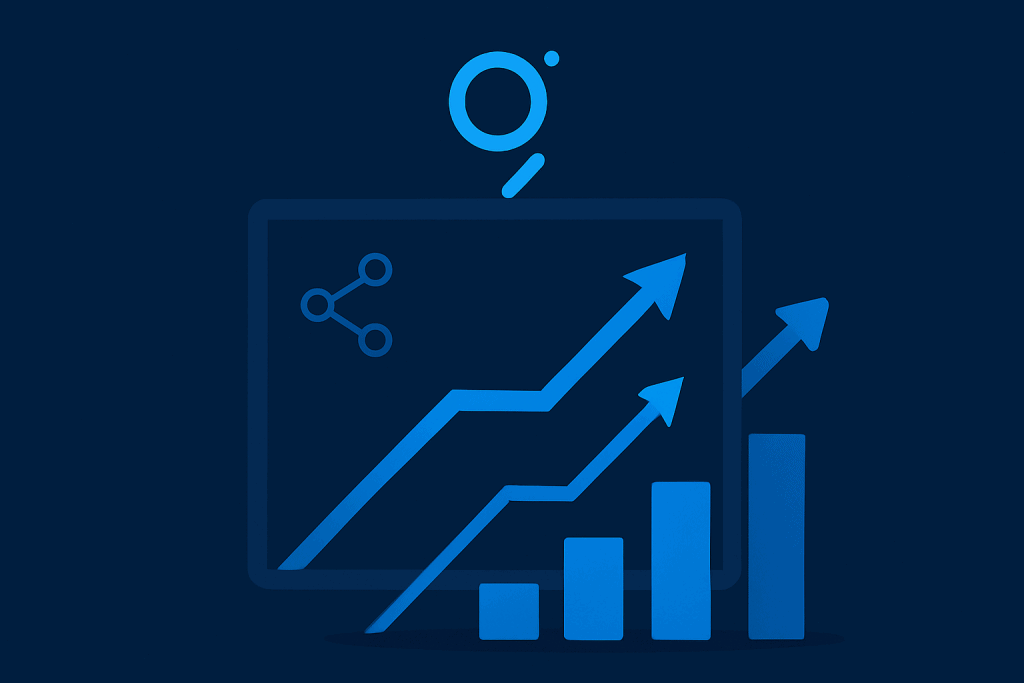
블록체인 개발이나 탈중앙화 금융에 관심이 있으시다면 더 그래프 크립토에 대해 들어보셨을 것입니다. “블록체인의 구글”이라고 불리는데, 그럴 만한 이유가 있습니다. 이 프로토콜을 사용하면 개발자는 자체 서버 없이도 블록체인 데이터에 액세스하고 쿼리할 수 있습니다. 빠르고 투명하며 탈중앙화된 방식으로 데이터를 사용할 수 있게 한다는 간단하지만 강력한 아이디어입니다.
저는 거의 모든 웹3.0 프로젝트에서 더 그래프 크립토가 언급되는 것을 보고 더 그래프 크립토를 검토하기로 결정했습니다. 암호화 포럼에서든 개발자 문서에서든 더 그래프는 계속 등장했습니다. 그래서 직접 테스트해보고 블록체인 개발자가 꼭 알아야 할 도구가 된 이유를 알아봤습니다.
더 그래프 크립토 개요
그래프 크립토(GRT)는 블록체인 데이터 쿼리를 위해 설계된 탈중앙화 인덱싱 프로토콜입니다. 개발자는 이를 사용하여 정확하고 효율적인 방식으로 데이터를 검색하는 서브그래프라고 하는 API를 구축할 수 있습니다.
더 그래프 크립토의 주요 기능:
- 하위 그래프: 블록체인 데이터를 색인하고 쿼리하는 사용자 정의 오픈 소스 API.
- 탈중앙화: 무결성을 유지하기 위해 인덱서, 큐레이터, 위임자 네트워크를 사용합니다.
- GRT 토큰: 스테이킹, 큐레이션, 위임을 통해 네트워크에 힘을 실어줍니다.
- 멀티체인 지원: 이더리움, 폴리곤, 아비트럼, NEAR 등과 호환됩니다.
- GraphQL 통합: 간소화되고 유연한 데이터 쿼리가 가능합니다.
이러한 구조를 통해 개발자는 자체 데이터 인덱서를 구축하는 번거로움을 건너뛸 수 있어 앱 개발이 더 빠르고 확장성이 뛰어납니다.
그래프 암호화폐에 대한 심층 분석

이제 GRT에 대해 자세히 살펴보겠습니다. 플랫폼을 광범위하게 사용해 본 결과, 정말 눈에 띄는 몇 가지 영역을 발견했습니다.
디자인 및 아키텍처
그래프는 GraphQL을 사용하여 개발자가 블록체인 데이터에 정밀하게 액세스할 수 있도록 지원합니다. 하위 그래프를 통해 사용자는 데이터를 색인하고 쿼리하는 방법을 정의할 수 있습니다. 이 구조는 복잡성을 줄이고 개발 속도를 높입니다. 개발자는 어떤 데이터를 검색하고 어떻게 구성할지 완전히 제어할 수 있습니다.
기능
그래프를 통해 탈중앙화 애플리케이션은 블록체인 데이터를 빠르고 효율적으로 가져올 수 있습니다. 개발자는 전체 블록체인을 스캔하지 않고도 하위 그래프를 사용하여 특정 정보를 얻을 수 있습니다. 이러한 집중적인 접근 방식은 시간과 리소스를 절약합니다. 또한 실시간 데이터에 의존하는 애플리케이션의 성능을 향상시킵니다.
성능
그래프는 네트워크 부하가 많은 상황에서도 밀리초 단위로 데이터 쿼리에 응답합니다. 인덱서는 관련 데이터를 지속적으로 업데이트하고 저장하여 빠른 액세스를 유지합니다. 테스트 중에 쿼리 결과는 지연 없이 즉시 도착했습니다. 이러한 속도는 앱이 원활하게 실행되고 사용자의 참여를 유지하는 데 도움이 됩니다.
사용성
더 그래프는 온보딩 프로세스를 간소화하는 호스팅 서비스를 제공합니다. 개발자는 탈중앙화 네트워크로 이동하기 전에 하위 그래프 테스트를 시작할 수 있습니다. 명확한 문서가 모든 단계를 사용자에게 안내합니다. 초보자도 짧은 시간 내에 따라하며 기능적인 앱을 구축할 수 있습니다.
보안 및 신뢰성
더 그래프는 오작동하는 인덱서에 대한 슬래싱 메커니즘을 통해 네트워크 무결성을 우선시합니다. 스마트 콘트랙트는 사용자 데이터와 토큰을 보호하기 위해 감사를 거쳤습니다. 위임자와 큐레이터는 투명성을 유지하기 위해 프로토콜 규칙에 의존합니다. 네트워크는 페널티와 보상을 시행하여 신뢰를 증진합니다.
확장성 및 네트워크 성장

그래프는 여러 체인과 통합되며 계속해서 지원을 확장하고 있습니다. 이제 더 많은 프로젝트에서 디파이와 NFT의 데이터 쿼리를 위해 Graph를 사용하고 있습니다. 서브그래프는 다양한 생태계에서 증가하는 수요를 충족하기 위해 확장됩니다. 프로토콜은 미래의 트래픽과 사용 사례를 처리하기 위해 꾸준히 발전하고 있습니다.
토큰노믹스와 인센티브 모델
GRT 토큰은 스테이킹, 큐레이션, 위임을 통해 네트워크 내에서 활동을 촉진합니다. 인덱서는 정확한 데이터를 제공하면 보상을 받습니다. 위임자는 신뢰할 수 있는 인덱서를 후원하고 수익을 공유합니다. 이 모델은 사용자 인센티브를 조정하고 장기적인 네트워크 성장을 지원합니다.
비교
더 그래프 크립토를 현재 블록체인 업계에서 사용되는 유사한 서비스와 비교해 보겠습니다.
| 기능 | 그래프 암호화 | 공유 | Moralis |
|---|---|---|---|
| 쿼리 언어 | GraphQL | REST API | REST 및 SDK |
| 완전 탈중앙화 | 예 | 아니요(하이브리드) | 아니요 |
| 멀티 체인 지원 | 예 | 예 | 예 |
| 토큰 유틸리티 | GRT | CQT | 없음 |
| 개발자 경험 | 높음 | Medium | Medium |
코발런트와 모랄리스 모두 강력한 도구입니다. 하지만 중앙화된 모델에 더 많이 기대고 있습니다. 탈중앙화와 네트워크 거버넌스가 프로젝트에 중요하다면 더 그래프가 분명한 이점이 있습니다.
장단점
더 그래프 크립토 사용의 장점과 한계에 대해 자세히 알아보세요.
| 장점 | 단점 |
|---|---|
| 빠르고 효율적인 데이터 쿼리 | 초보자를 위한 학습 곡선 필요 |
| 완전히 분산된 네트워크 | GRT 스테이킹은 복잡할 수 있습니다. |
| 훌륭한 문서 및 지원 | 다른 튜토리얼보다 적은 수의 메인스트림 튜토리얼 |
| 확장 가능하고 안정적인 인프라 | 일부 체인에는 추가 구성이 필요합니다. |
전반적으로 이점이 단점보다 훨씬 큽니다. 시스템 작동 방식을 이해하면 개발자 툴킷의 강력한 도구가 됩니다.
결론
더 그래프 크립토를 살펴보고 테스트해본 결과, 이 프로토콜이 단순한 과대 광고 이상의 가치를 지니고 있다는 것을 알 수 있었습니다. 개발자에게 블록체인 데이터를 효율적이고, 안전하고, 투명하게 검색하고 색인화할 수 있는 방법을 제공합니다. 이더리움을 기반으로 구축하든 멀티체인 환경으로 확장하든, 더 그래프는 전통적으로 복잡했던 프로세스를 간소화합니다.
초보자는 처음에는 학습 곡선이 가파르지만, 풍부한 문서와 지원 커뮤니티, 실제 성능을 보면 그만한 가치가 있습니다. 웹3.0 개발을 진지하게 고려하고 있다면 더 그래프 크립토는 여러분의 기술 스택에서 최고의 자리를 차지할 가치가 있습니다.
그래프 암호화 등급
평점: 별 5개 중 4.6점
실제 프로젝트에서 GRT를 테스트하고 사용한 후 제 경험을 평가하는 방법은 다음과 같습니다. 빠르고, 탈중앙화되어 있으며, 개발자를 우선시합니다.
FAQ
블록체인 애플리케이션에서 더 그래프 크립토는 어떤 용도로 사용되나요?
그래프 크립토는 하위 그래프를 통해 탈중앙화 애플리케이션의 특정 블록체인 데이터를 검색하는 데 사용되므로 사용자 지정 데이터 인덱싱 솔루션이 필요하지 않습니다.
더 그래프 크립토가 웹3 개발에서 중앙집중식 대안보다 낫나요?
예. 그래프 크립토는 웹3.0 환경에서 신뢰와 안정성에 중요한 탈중앙화, 투명성, 사용자 관리 운영을 제공합니다.
더 그래프 크립토는 개발자에게 얼마나 초보자 친화적인가요?
그래프 크립토는 약간의 학습 곡선이 있지만, 온보딩 과정을 안내하는 훌륭한 문서, 튜토리얼 및 커뮤니티 지원을 제공합니다.
리소스
- CryptoTips.eu. 그래프 암호화 정보
- Medium. 그래프 암호화폐 GRT 리뷰: 구매해야 할까요?
- 애널라이즈코인. 그래프 암호화폐 리뷰: 잠재력 살펴보기
- 코인뷰로. 더 그래프(GRT) 리뷰
- 크립토돌드. 그래프 설명
- 크립토리스트. GRT 코인 프로필
